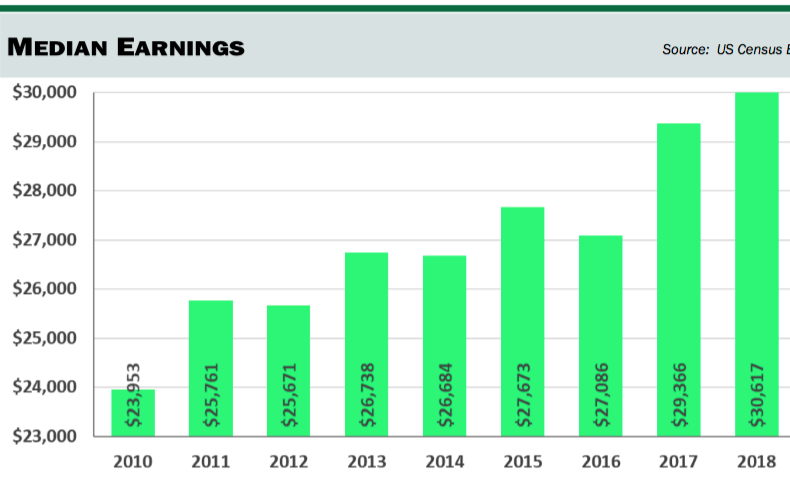The population of Greensboro is growing and it’s also getting older according to an annual report by the Greensboro Planning Department.
In 2018, the last year the report covers, 13.9 percent of Greensboro residents were over 65 compared with 12.2 percent who were over 65 in 2010.
As far as millennials go, according to the report the percentage of millennials in the Greensboro population is hovering around 30 percent.
Greensboro through 2018 remains a minority-majority city with 52 percent of the population nonwhite and 48 percent white. In 2010, 47 percent of the city was nonwhite and 53 percent white. In 2014, 53 percent was nonwhite and 47 percent white.
Since 2010, median earnings have increased by 27.8 percent and the median value of homes has increased by 4.9 percent.
In 2010, the city issued commercial building permits for $218 million worth of construction, and in 2018, that had risen to $516 million in commercial construction. However, residential construction permits have not seen the same level of increase. In 2010, residential building permits totaled $106 million and in 2018 they were $181 million, which was quite a drop from 2017 when the permits totaled $298 million and 2016 when they totaled $287 million. The worst year out of the past eight for building permits was 2012 when residential permits totaled $103 million and commercial $193 million.
While Greensboro does continue to grow, it is growing more slowly than the larger cities in North Carolina. From 2000 to 2018, Greensboro’s growth rate was 31.6 percent while during the same period Raleigh’s growth rate was 70.4 percent and Durham’s growth rate was 46.8 percent. Winston-Salem’s growth rate was only slightly higher than Greensboro’s at 32.6 percent and High Point saw a growth rate of 33.2 percent over that time period.
The unemployment rate from 2010 to 2018 has plummeted. In Greensboro it has fallen from 10.1 percent in 2010 to 4.3 percent in 2018.

